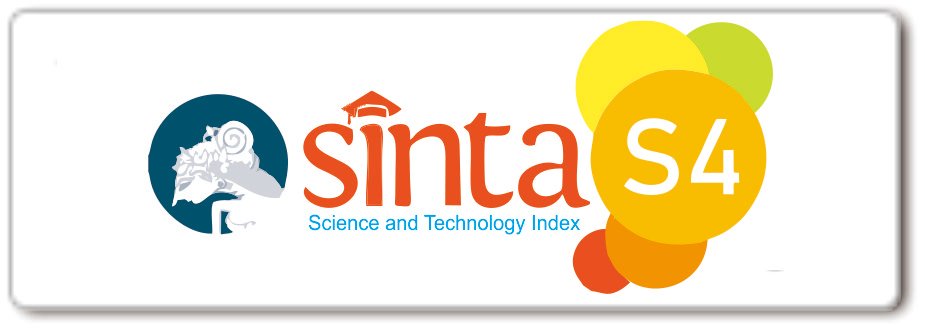Peran Radiasi Pada Tata Laksana Keloid
DOI:
https://doi.org/10.33820/mdvi.v45i4.45Abstract
Keloid merupakan salah satu lesi jinak pada kulit yang timbul akibat respons penyembuhan luka yang
abnormal. Meskipun bersifat jinak, namun keloid dapat menimbulkan gejala klinis yang mengganggu. Terdapat
banyak pilihan terapi untuk keloid yang bersifat invasif maupun non-invasif. Pembedahan merupakan modalitas
invasif yang paling umum digunakan, meskipun angka rekurensi pasca terapi tunggal dengan pembedahan
dinilai cukup tinggi yakni mencapai 50-100% dalam 5 tahun. Radioterapi dapat dilakukan sebagai monoterapi
maupun sebagai terapi adjuvan pasca bedah dalam tata laksana keloid. Terapi keloid dengan pembedahan
diikuti dengan radiasi menghasilkan angka rekurensi kurang dari 10% pada 1 tahun pertama pascaterapi.
Radioterapi yang dilakukan dapat berupa brakiterapi maupun radiasi eksterna. Radiasi dapat menurunkan
proliferasi fibroblas dan sel endotel yang selanjutnya mengurangi produksi kolagen. Radioterapi pascabedah
dianjurkan untuk dimulai dalam waktu kurang dari 48 jam dengan total dosis yang masih menjadi perdebatan.
Kaitan antara dosis dan efek radiasi dengan biologically equivalent dose (BED) menjadi dasar pembuatan
pedoman. BED lebih dari 30 Gy dianggap efektif untuk menurunkan angka rekurensi keloid.
Kata kunci: keloid, terapi, pascabedah, radiasi, rekurensi
Downloads
References
and hypertrophic scars: a review of recent developments
in pathogenesis and management. Nig Q J Hosp Med.
2007;17(4):134-9.
2. Juckett G, Hartman-Adams H. Management of keloids and
hypertrophic scars. Am Fam Physician. 2009;80(3):253-60.
3. Vila Capel A, Vilar Palop J, Pedro Olive A, Sanchez-Reyes
Fernandez A. Adjuvance in refractory keloids using electron
beams with a spoiler: Recent results. Rep Pract Oncol Radiother.
2015;20(1):43-9.
4. van Leeuwen MC, Stokmans SC, Bulstra AE, Meijer OW,
Heymans MW, Ket JC, dkk. Surgical excision with adjuvant
irradiation for treatment of keloid scars: A systematic review.
Plast Reconstr Surg Glob Open. 2015;3(7):e440.
5. Berman B. Keloid and hypertrophic scar 2016 [updated 2016,
17th May]. 2016. [Disitasi 7 Juni 2017]. Tersedia di : http://
emedicine.medscape.com/article/1057599-overview#a2.
6. Wolfram D, Tzankov A, Pulzl P, Piza-Katzer H. Hypertrophic
scars and keloids--a review of their pathophysiology,
risk factors, and therapeutic management. Dermatol Surg.
2009;35(2):171-81.
7. Kokoska MS. Hypertrophic Scarring and Keloids 2016
[updated 2016, 22nd March]. 2016. [Disitasi 7 Juni 2017].
Tersedia di: http://emedicine.medscape.com/article/876214-
overview#a2.
8. Gauglitz GG. Management of keloids and hypertrophic
scars: current and emerging options. Clin Cosmet Invest
Dermatol. 2013;6:103-14.
9. O’Sullivan ST, O’Shaughnessy M, O’Connor TP. Aetiology
and management of hypertrophic scars and keloids. Ann R
Coll Surg Engl. 1996;78(3 ( Pt 1)):168-75.
10. Naeini FF, Najafian J, Ahmadpour K. Bleomycin tattooing
as a promising therapeutic modality in large keloids and hypertrophic
scars. Dermatol Surg. 2006;32(8):1023-9;
11. Monstrey S, Middelkoop E, Vranckx JJ, Bassetto F, Ziegler
UE, Meaume S, et al. Updated scar management practical
guidelines: Non-invasive and invasive measures. J Plast Reconstr
Aesthet Surg. 2014;67(8):1017-25.
12. Emad M, Omidvari S, Dastgheib L, Mortazavi A, Ghaem H.
Surgical excision and immediate postoperative radiotherapy
versus cryotherapy and intralesional steroids in the management
of keloids: A prospective clinical trial. Med Princ
Pract. 2010;19(5):402-5.
13. Veen RE, Kal HB. Postoperative high-dose-rate brachytherapy
in the prevention of keloids. Int J Radiat Oncol Biol
Phys. 2007;69(4):1205-8.
14. Shen J, Lian X, Sun Y, Wang X, Hu K, Hou X, et al. Hypofractionated
electron-beam radiation therapy for keloids:
Retrospective study of 568 cases with 834 lesions. J Radiat
Res. 2015;56(5):811-7.
15. Carvajal CC, Ibarra CM, Arbulo DL, Russo MN, Sole CP.
Postoperative radiotherapy in the management of keloids.
Ecancer Medical Science. 2016;10:690.
16. Kutzner J, Schneider L, Seegenschmiedt MH. [Radiotherapy
of keloids. Patterns of care study -- results]. Strahlenther
Onkol. 2003;179(1):54-8.
17. Song C, Wu HG, Chang H, Kim IH, Ha SW. Adjuvant single-
fraction radiotherapy is safe and effective for intractable
keloids. J Radiat Res. 2014;55(5):912-6.
18. Flickinger JC. A radiobiological analysis of multicenter data
for postoperative keloid radiotherapy. Int J Radiat Oncol
Biol Phys. 2011;79(4):1164-70
19. Kuribayashi S, Miyashita T, Ozawa Y, Iwano M, Ogawa
R, Akaishi S, et al. Post-keloidectomy irradiation using
high-dose-rate superficial brachytherapy. J Radiat Res.
2011;52(3):365-8.
20. Arneja JS, Singh GB, Dolynchuk KN, Murray KA, Rozzelle
AA, Jones KD. Treatment of recurrent earlobe keloids with
surgery and high-dose-rate brachytherapy. Plast Reconstr
Surg. 2008;121(1):95-9.
21. Garg MK, Weiss P, Sharma AK, Gorla GR, Jaggernauth W,
Yaparpalvi R, et al. Adjuvant high dose rate brachytherapy
(Ir-192) in the management of keloids which have recurred
after surgical excision and external radiation. Radiother Oncol.
2004;73(2):233-6.
22. Guix B, Henriquez I, Andres A, Finestres F, Tello JI, Martinez
A. Treatment of keloids by high-dose-rate brachytherapy:
A seven-year study. Int J Radiat Oncol Biol Phys.
2001;50(1):167-72.













